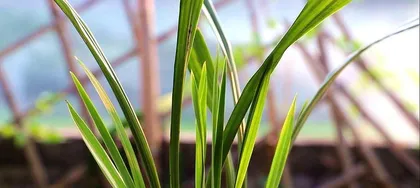Cymbidium sinense (Black Orchid) is a shade-tolerant, cold-hardy, and drought-resistant ornamental plant, known as the "Unconquerable Flower," loved by gardening enthusiasts. However, many people find that this beautiful flower is difficult to grow and bloom when trying to cultivate it. To help everyone better care for Cymbidium sinense, we have specially compiled some tips and experiences for your reference.

Growth Characteristics of Black Orchids
Also known as Sandalwood Flowers or Winter Orchids, Black Orchids belong to the orchid family. Their growth cycle is generally around 3-5 years. They have well-developed roots, upright stems, long strip-shaped leaves with light green color. The inflorescence of Black Orchids is umbel or conical, with flowers in red, purple, white and other colors, rich fragrance, and a flowering period of up to 2 months.
Suitable Environment for Black Orchids
Black Orchids prefer semi-shade and moist environments, well-ventilated places, avoiding direct sunlight. The suitable temperature is around 15°C-25°C. In summer, it's best to place them in a cool, ventilated area, and in winter, avoid indoor temperatures being too high. Black Orchids like acidic soil with pH value between 5.5-6.5, and the soil should be loose with good drainage.

Watering Methods
Black Orchids like moist environments but not overly wet. Generally, water once or twice a week in spring and autumn, twice or three times a week in summer, and reduce watering frequency appropriately in winter. When watering, evenly moisten the entire potting soil, and do not pour water directly on the plants.
Fertilization Techniques
Black Orchids grow slowly and don't require frequent fertilization. Organic fertilizer can be applied appropriately in spring and autumn to supplement nutrients needed by the plants. Fertilization should be avoided in summer to prevent加重ing the plant burden and causing poor growth.
Pest and Disease Control
Black Orchids are relatively resistant to pests and diseases, but some common problems may occur. Common pests and diseases include powdery mildew, aphids, and spider mites. Prevention methods include regularly spraying fungicides and insecticides, and keeping the plants clean.

Pruning Methods
Pruning Black Orchids is mainly to maintain plant shape and promote flowering. Leaves, flower branches, and excessively growing stems can be pruned appropriately in spring and autumn. Pruning should be avoided in winter to prevent affecting plant growth.
Propagation Techniques
The propagation methods for Black Orchids include seed propagation, division propagation, and stem cutting propagation. Seed propagation should be done in spring, stem cutting propagation in autumn, and division propagation can be done at any time. Before propagation, the soil should be loosened and moistened, and appropriate temperature and humidity should be maintained.
Common Questions and Answers
1. Why does my Black Orchid grow very slowly?
A: It could be due to poor soil quality, insufficient nutrients, lack of sunlight or water, etc.
2. Why are the leaves of my Black Orchid turning yellow?
A: It could be due to lack of nutrients, overwatering, or soil pH being too high, etc.
3. Why is the flowering period of my Black Orchid very short?
A: It could be due to unsuitable growing environment, lack of nutrients, or excessive fertilization, etc.
4. How to deal with white powder on Black Orchid leaves?
A: You can spray with fungicide and keep the plants clean.
5. How to deal with insects on Black Orchid leaves?
A: You can spray with insecticide and keep the plants clean.
Conclusion: By learning these care techniques for Black Orchids, I believe everyone has gained a deeper understanding of this beautiful ornamental plant. In daily life, we should water, fertilize, and prune reasonably according to actual situations, and regularly clean pests and diseases to ensure the growth and flowering of Black Orchids. Wishing everyone satisfactory results in caring for Black Orchids!
<|end_of_box|>